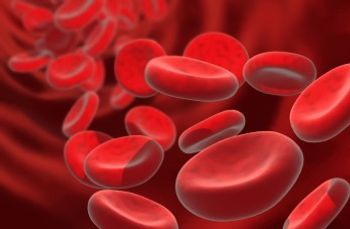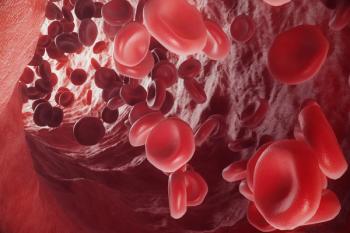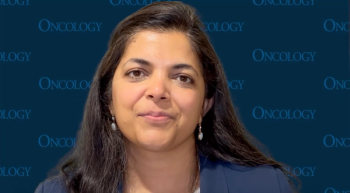
- ONCOLOGY Vol 9 No 9
- Volume 9
- Issue 9
Commentary (Wallner): Locoregional Therapies for Early-Stage Prostate Cancer
Dr. Stock provides a thorough summary of recent data on the principal modes of treatment for early-stage prostate cancer. Prostatectomy, external radiation, and brachytherapy have all improved substantially over the last 15 years. Despite these improvements, however, it is still unclear how these modalities compare in terms of efficacy and morbidity. To provide some balance to his evenhanded approach, I will add a few remarks.
Dr. Stock provides a thorough summary of recent data on the principal modes of treatment for early-stage prostate cancer. Prostatectomy, external radiation, and brachytherapy have all improved substantially over the last 15 years. Despite these improvements, however, it is still unclear how these modalities compare in terms of efficacy and morbidity. To provide some balance to his evenhanded approach, I will add a few remarks.
Surgery vs Radiation: PSA Evens the Playing Field
Surgeons and nonsurgeons alike have generally considered radical prostatectomy to offer the greatest likelihood of cure. Many oncologists have long suspected that surgical results were favorably biased by careful patient selection. This bias was not necessarily apparent when one compared merely stage or Gleason score between series, however. Introduction of prostate-specific antigen (PSA) permitted a more accurate comparison between series because pretreatment PSA is less subjective than stage or Gleason score. As described by Dr. Stock, results with surgery, external radiation, and brachytherapy look remarkably similar when adjusted for pretreatment PSA.
Prostatectomy: Cure Rates Not So High as Generally Believed
A phenomenal resurgence in prostatectomies has occurred over the last 15 years, due to the advent of PSA as a screening tool and to the decreased morbidity of modern surgical techniques. I strongly suspect, however, that both the cure and potency-sparing rates of the nerve-sparing prostatectomy are probably substantially lower than are generally quoted.
My suspicion about surgical cure rates stems from a 1993 PSA-based follow-up report by Walsh et al [1]. After analyzing all Tl/T2 patients, they found no clear leveling off of the biochemical disease-free survival curves. Even for the more favorable patient groups (pretreatment PSA level, 4 to 10 ng/mL), there was a persistent drop in the disease-free survival curve, which fell to 50% eight years after surgery. Only for patients with a normal presurgical PSA did the biochemical disease-free survival curves appear to plateau beyond 5 years. This lack of a convincing leveling off of the curves raises the question as to whether a substantial percentage of patients are cured surgically.
Doubt regarding the true efficacy of prostatectomy is heightened by the fact that so few surgeons have reported their results, despite the immense number of prostatectomies being performed. It is particularly curious that Dr. Thomas Stamey of Stanford has published detailed studies of the shortcomings of radiation but has not presented any of his own PSA-based follow-up after prostatectomy despite having performed several hundred such procedures [2].
Some surgeons claim that longer follow-up will show the superiority of prostatectomy over radiation. However, there are no convincing data using pretreatment PSA stratification to support this claim. Also, some surgeons maintain that younger patients are better served with surgery than with external-beam radiation or brachytherapy. No persuasive data using pretreatment PSA stratification support this contention either.
Potency-Sparing Surgery: Where Are the Data?
The resurgence in prostate surgery has been fueled, in part, by the introduction of the potency-sparing technique by Patrick Walsh of Johns Hopkins University. Although Walsh has stated that this approach preserves potency in approximately 50% of patients, most other surgeons have been much less successful. As mentioned by Stock, Stamey et al have reported that potency is spared in only 11% of their patients.
Even Walsh's own data are sketchy, and he has been performing the nerve-sparing operation for more than 10 years. Despite numerous publications from the Hopkins group regarding many facets of prostatectomy, no actuarial, long-term follow-up data on potency preservation have been reported. Potency declines with time after radiation therapy, and the same is probably true after surgery. The lack of longer follow-up data makes one wonder whether potency-sparing surgery, even in Walsh's hands, is as successful as generally stated.
Reason for Optimism
I believe that we are improving the cure rates for early-stage prostate carcinoma. Nerve-sparing prostatectomy, conformal external radiation, and brachytherapy are all legitimate treatment advances. Our short-term goal should be to describe their relative efficacy and morbidity more objectively.
References:
1. Partin AW, Pound CR, Clemens JQ, et al: Serum PSA after anatomic radical prostatectomy: The Johns Hopkins experience after 10 years. Urol Clin N Am 20:713-725, 1993.
2. Stamey TA, Ferrari MK, Schmid H: The value of serial prostate specific antigen determinations 5 years after radiotherapy: Steeply increasing values characterize 80% of patients. J Urol 150:1856-1859, 1993.
Articles in this issue
over 30 years ago
ODAC Recommends Full Approval for Gemzar for Pancreatic Cancerover 30 years ago
New Mulltiple Marker Blood Test Detects Melanoma Tumor Cellsover 30 years ago
Book Review: Euthanasia is Not the Answer-A Hospice Physician's Viewover 30 years ago
Famvir Reported to Reduce Pain of ShinglesNewsletter
Stay up to date on recent advances in the multidisciplinary approach to cancer.

















































































